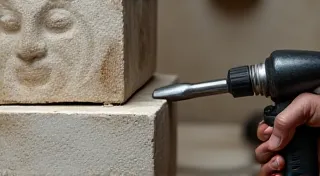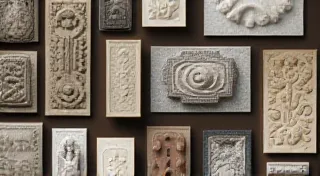Safety First: Stone Carving Safety Guidelines
Stone carving, a craft steeped in history and artistry, offers a deeply satisfying creative outlet. But the beauty of transforming raw stone into a work of art doesn't come without potential risks. Stone carving involves tools, dust, and physical exertion, all of which can lead to injury if proper safety precautions aren’t observed. This guide outlines essential safety guidelines to protect yourself and enjoy the process responsibly. Before you even pick up a chisel, it’s important to consider that inspiration often comes from studying the masters – exploring resources like “Inspiration from Stone Carving Masters” can provide valuable insight into techniques and approaches that inform your own safety considerations.
Understanding the Hazards
Before you even pick up a chisel, it’s crucial to understand the potential hazards associated with stone carving. These can be broadly categorized into:
- Dust Inhalation: Stone dust, particularly from silica-rich stones like sandstone and granite, is a serious health concern. Prolonged exposure can lead to silicosis, a debilitating and irreversible lung disease. Even shorter-term exposure can irritate the respiratory system. The type of stone you’re working with significantly impacts the risk; understanding these differences is key.
- Flying Debris: Chisels striking stone produce chips and fragments that can fly with considerable force, posing a risk to eyes, skin, and potentially more serious injuries.
- Tool-Related Injuries: Chisels, hammers, grinders, and other tools present obvious risks of cuts, impact injuries, and repetitive strain issues.
- Physical Strain & Ergonomics: Carving stone is physically demanding. Incorrect posture and repetitive movements can lead to back pain, muscle strains, and other musculoskeletal problems.
- Noise Pollution: Power tools, in particular, generate significant noise that can damage hearing over time.
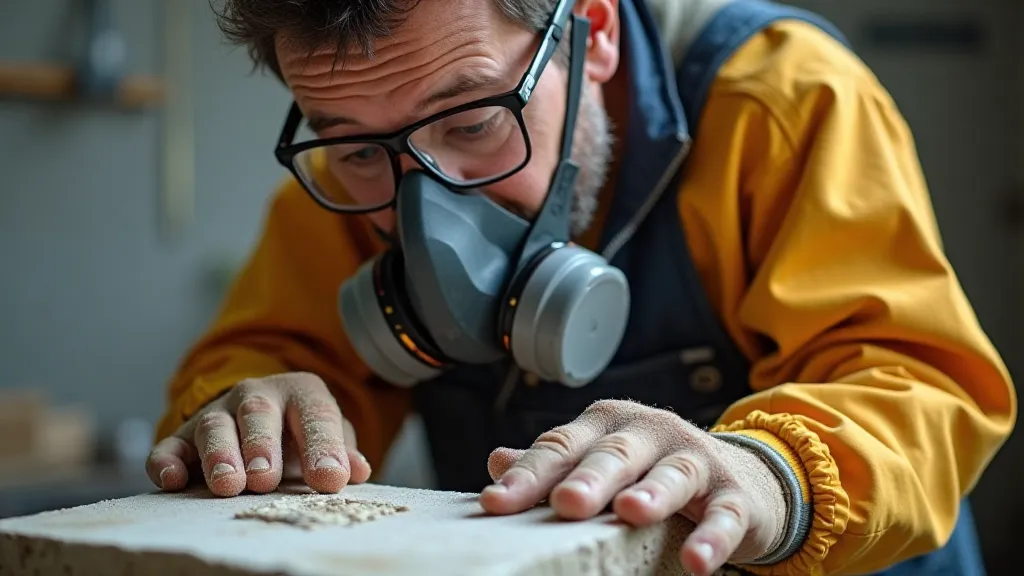
Personal Protective Equipment (PPE) – Your First Line of Defense
Investing in and consistently using appropriate PPE is absolutely essential. Here’s a breakdown of the key items:
- Respiratory Protection: This is arguably the most important aspect of stone carving safety. A properly fitted N95 or, even better, a powered air-purifying respirator (PAPR) is vital. A simple dust mask will *not* provide adequate protection against silica dust. Ensure the respirator seals correctly to your face, and replace filters regularly. The effectiveness of your respiratory protection is directly tied to the stone you’re using – if you’re working with sandstone, for instance, the need for rigorous protection is amplified.
- Eye Protection: Safety glasses or, even better, a full face shield, are mandatory. Flying debris is unpredictable, and protecting your eyes is paramount.
- Hearing Protection: Earplugs or earmuffs should be worn whenever using power tools. Noise-induced hearing loss is preventable.
- Hand Protection: Heavy-duty work gloves protect your hands from cuts, abrasions, and vibration.
- Foot Protection: Sturdy, closed-toe shoes or boots are essential to protect your feet from dropped tools and falling stone.
- Body Protection: Wear appropriate clothing – long sleeves and pants – to protect your skin from dust and minor cuts. Consider a shop apron for added protection.
Dust Control Measures – Beyond the Respirator
While a respirator is crucial, controlling dust at its source is even better. Consider these measures:
- Wet Cutting: Whenever possible, wet the stone with water during cutting and carving. This dramatically reduces dust generation.
- Local Exhaust Ventilation (LEV): A LEV system, like a vacuum attached to the cutting area, sucks up dust before it can become airborne. This is the gold standard for dust control. When dealing with challenging materials, such as sandstone, maximizing dust control measures is essential to prevent respiratory issues.
- Regular Cleaning: Frequently clean your workspace to prevent dust accumulation. Use a HEPA vacuum cleaner.
- Air Filtration: Consider an air filtration system for your workshop to reduce overall dust levels.
Tool Safety – Handle with Care
Each type of stone carving tool presents unique safety considerations. Here are some general guidelines:
- Chisels: Keep chisel edges sharp. Dull tools require more force, increasing the risk of slips and injuries. Always strike chisels squarely.
- Hammers: Use appropriate hammer size and weight for the chisel and stone. Keep your swing path clear.
- Grinders: Grinders are powerful tools that require careful handling. Always use a grinding wheel designed for stone and ensure it’s properly mounted and guarded. Never force the grinder – let the tool do the work.
- Power Tools: Read and understand the manufacturer's instructions for all power tools before use. Ensure all safety guards are in place and functioning correctly.
- Secure Workpieces: Always clamp or otherwise secure the stone you're working on to prevent it from moving unexpectedly.
Ergonomics & Physical Well-being
Stone carving is physically demanding. Pay attention to your body and adopt practices to prevent strain and injury:
- Proper Posture: Maintain a neutral spine and avoid awkward postures.
- Take Breaks: Frequent short breaks are more effective than infrequent long ones.
- Stretching & Warm-up: Stretch before and during carving sessions.
- Vary Tasks: Rotate between different tasks to avoid repetitive movements.
- Listen to Your Body: If you feel pain, stop what you're doing and address the issue.
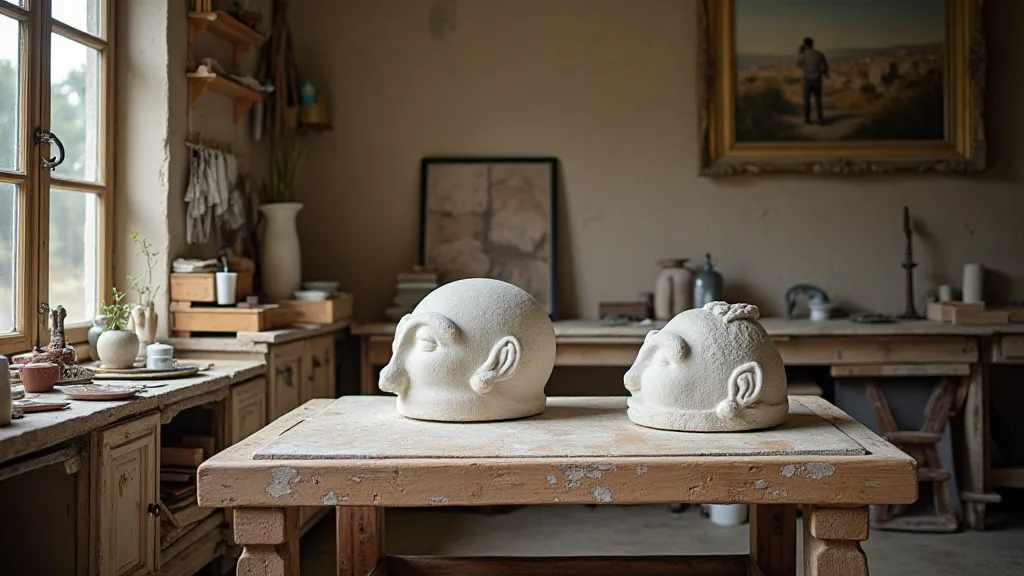
First Aid & Emergency Preparedness
Even with the best safety precautions, accidents can happen. Be prepared:
- First Aid Kit: Keep a well-stocked first aid kit readily available.
- Know Basic First Aid: Familiarize yourself with basic first aid procedures, including how to treat cuts, abrasions, and eye injuries.
- Emergency Contact Information: Keep emergency contact information readily accessible.
- Ventilation in Case of Injury: In the event of an injury involving stone dust inhalation, move to a well-ventilated area immediately.
Stone Specific Considerations
Different types of stone pose varying risks. For instance:
- Silica-rich stones (sandstone, granite): Highest risk of silicosis. Strict dust control measures are essential. Encountering problems while carving? The article "Troubleshooting Common Stone Carving Problems" offers a comprehensive guide to dealing with common issues and ensuring a safe and productive carving experience.
- Softer stones (soapstone, alabaster): Less dust generation, but can still irritate the respiratory system.
- Harder stones (marble, limestone): Require more force, increasing the risk of tool-related injuries.
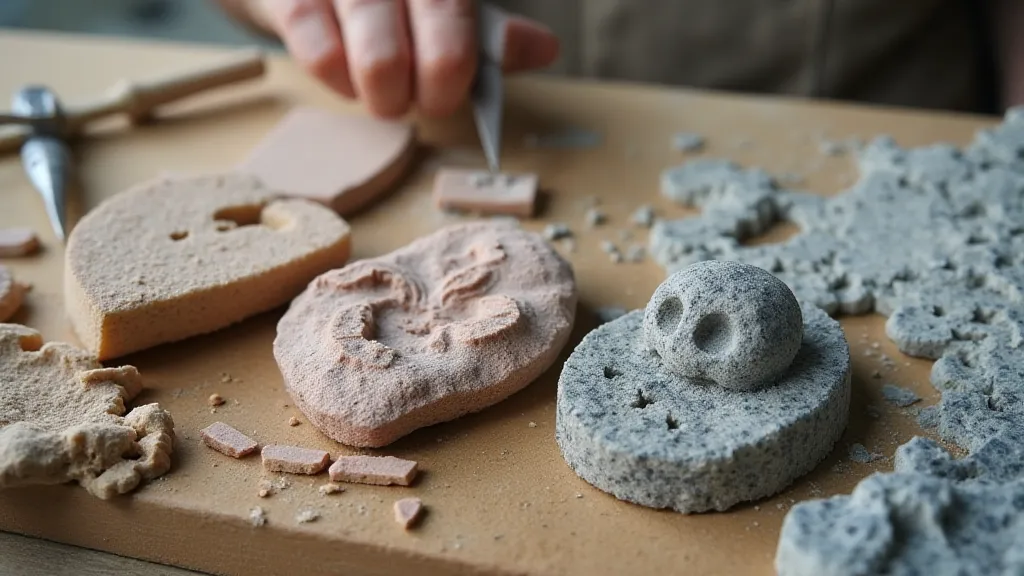
Getting Started with Sandstone Carving
Sandstone, while often a beginner-friendly choice due to its relative softness, still presents unique challenges related to dust generation. Mastering techniques for working with this material is key to enjoying the craft safely and successfully. If you're drawn to sandstone, " Sandstone Carving: Tips and Tricks for Beginners" provides dedicated guidance on achieving beautiful results while minimizing risks. Understanding the specifics of sandstone carving can significantly contribute to your overall safety and skill development. It's important to remember that even seemingly straightforward carving projects require consistent adherence to safe practices.
Conclusion
Stone carving is a rewarding craft, but it’s crucial to prioritize safety. By understanding the hazards, utilizing appropriate PPE, implementing robust dust control measures, and continuously learning from experienced carvers, you can minimize risks and maximize enjoyment. Remember that ongoing learning is key, and exploring resources like those available online and in workshops can enhance your skills and promote safe practices. Prioritizing your well-being while creating art ensures a lasting and fulfilling journey in the world of stone carving.


